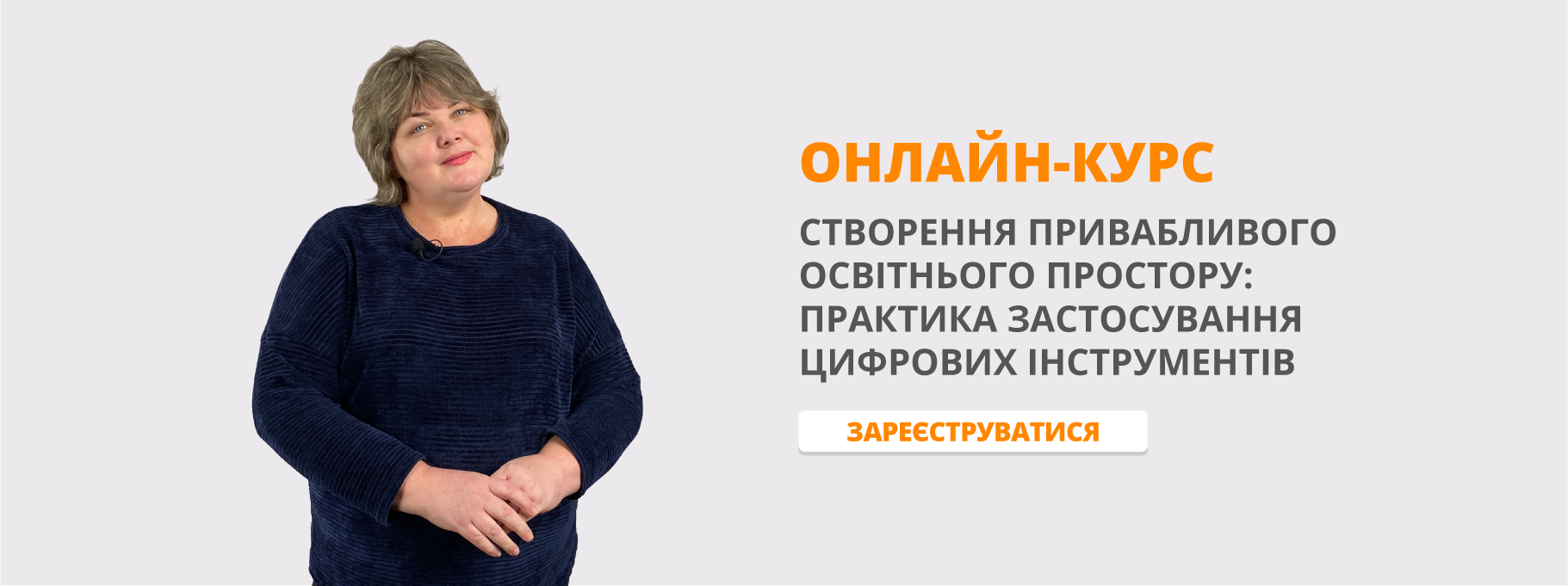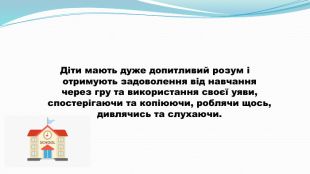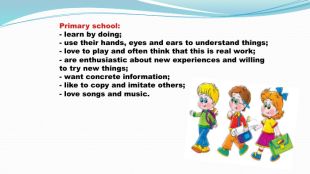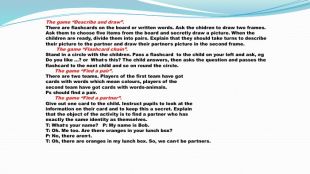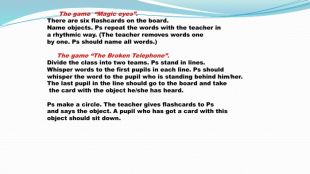Презентація на тему “Використання ігор та робота з флеш-картками на уроках англійської мови в НУШ.“
Про матеріал
Презентація містить особливості роботи з дітьми в НУШ та добірку вправ, які можна використовувати на уроках англійської мови. Перегляд файлу
Зміст слайдів


Безкоштовний сертифікат
про публікацію авторської розробки
про публікацію авторської розробки
Щоб отримати, додайте розробку
Додати розробку
